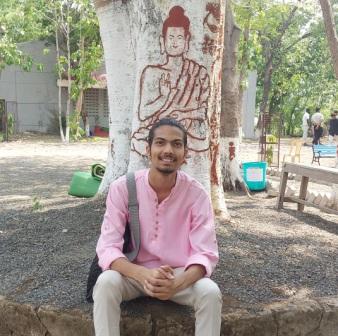Jatin Mathur
In a 6:1 landmark verdict, the Supreme Court yesterday allowed the sub-categorisation of scheduled castes in reservations, allowing wider protection for underrepresented groups.
A seven-judge Constitution bench headed by Chief Justice of India DY Chandrachud has thus ruled on whether sub-classification of Scheduled Castes and Scheduled Tribes is permissible for the purpose of reservation. The bench comprised Justices B R Gavai, Vikram Nath, Bela M Trivedi, Pankaj Mithal, Manoj Misra, and Satish Chandra Sharma. Cheif Justice ruled Scheduled Castes are not a homogeneous group.
Earlier in 2004, the Supreme Court held that the sub-classification among Scheduled Castes for the purpose of reservation would violate the right to equality and concluded that the SC list must be treated as a single, homogenous group.
Silences of Judiciary
The judgment has been silent on the parameters to measure the backwardness of different castes within the Scheduled Castes. There is no comparative data about different castes taking advantage of affirmative action but somehow, some castes within SCs are magically homogeneous in their advancement or forwardness?
The Supreme Court of India remained silent about illegal non-compliance of existing caste reservation. Instead they want a creamy layer and sub-classification SCs & STs. First Constituent assembly of Independent India decided to tackle caste questions through (1) Affirmative Action policies (2) Anti-discrimination laws (3) Social attitude change. However, the apex court doesn’t bother to care about pending SC/ST cases nor does it care to ask the government about measures taken by them to change social attitudes towards Dalits.
Many institutions including reputed academic and administrative institutions have a long history of declaring candidates as not suitable for jobs and thereby affecting the representation of Dalits in institutions. There have been various cases of deliberate gatekeeping of Dalits in premier institutions which ignores their economic status, how would sub-categorisation address the structural Discrimination faced by ‘affluent dalits’.
Sub-categorisation and sub-classification of Dalits on the economic basis reduces their experiences to mere economic phenomena masking the structural and social attitude towards them. It commits another mistake where economic progress is seen to be a remedy for caste. One can actually ask why doesn’t the apex court inquire about reasons of low education and poor economics of sub-castes, instead of restricting relaxed opportunities for SCs And STs, why can’t it create more opportunities so that every caste can have equitable resources for social and economic upliftment.
Are Affluent SCs/STs responsible for Backwardness of marginalized?
Sukhadeo Thorat in a recent Op Ed in The Hindu argued that the academic basis for sub-caste reservation is weak. He depicted how the policy measures namely (1) legal safeguards against caste discrimination, (2) reservation in legislature, public employment, education and institutions, (3) Measures to improve ownership of capital and assets were complementary to each other as substitutes to counter social backwardness. He explained how poor representation of sub-castes may be due to their inadequate education and due to poor financial situation unlikely due to caste discrimination from other castes of Scheduled Castes. Further if we build upon the argument then applying sub-classification and sub-categorization ignoring the very basis of backwardness it will hinder the progress of castes.
I think if a particular caste gained more momentum in terms of economic progress and political representation it’s because they followed Ambedkarite path of caste annihilation, they embraced Buddhism, they challenged caste structures, traditional occupations hence they got more progress not because they took up resources of other castes, there are castes who still have deep belief and respect for the socio-religious structures of caste and varna that declared them untouchable making them vulnerable to economic and educational loss. Among SCs in North and Central India Mahars, Jatavs and Valmikis are the castes who tried best to take up the Ambedkarite path. Despite enmity from caste hindus they embraced anti-caste ideas, They prioritized education over belief systems and hence they were benefited in terms of public employment. These castes struggled for Ambedkarite assertion and they gained political consciousness.
Further the affluent castes and tribes have immensely contributed to the anti-caste struggle and consciousness among Dalit-Bahujans. They have been collectively advocating for Dalit-Bahujan’s welfare over their caste which is the very basis of Ambedkarite mode of struggle i.e. ‘Annihilation of caste’ rather than using it as a label.
Divide and Rule
The decision of sub-classification and sub-categorization can be seen as a threat to political unity of SCs and STs. In the last few decades Dalit-Bahujans specifically SCs and STs have collaborated on various fronts to demand adequate representation in all spheres; further they even challenged the social and religious structures of discrimination. Affirmative actions and the question of representation always formed the common ground for them to collaborate.
Further one can argue that sub-classification reinforces the caste system by giving legal recognition to internal hierarchies within these communities. Social organization based on varna and caste perpetuated inequality thereby there are divisions within the castes and legally it might hinder efforts to eradicate caste-based discrimination. Sub-classification could potentially exacerbate divisions within already marginalized communities, leading to further social and political tensions. It might deepen hierarchy within SCs and STs, undermining the principle of unity and solidarity.
Addressing the intersectionality among SCs and STs
One has to look at the viability of identifying and quantifying the level of backwardness within sub-groups as it can be complex and subjective. Implementing different reservation quotas for various sub-groups could lead to administrative complexities. However such discussions where sub-caste reservations are seen to be viable further creates an imperative for a caste census which savarna supporters of sub-classification would oppose.
~~~
Jatin Mathur is a Social Anthropologist and Sociologist. He is a Sociology Master’s student at Delhi School of Economics, Delhi University. His areas of interest include Indian social order, Dalit-Bahujan studies and Social Movements.









